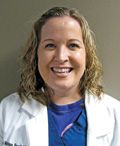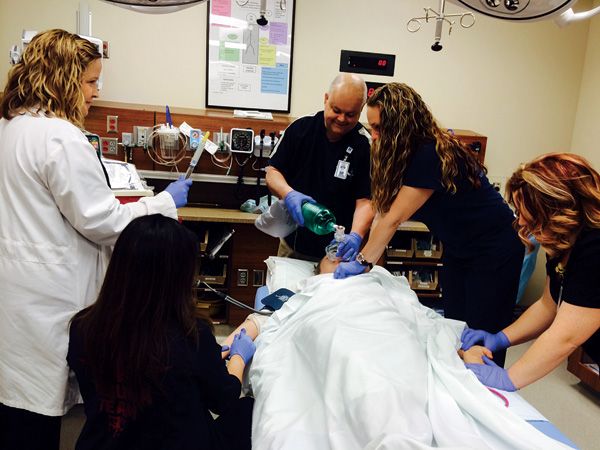Pharmacists in the ED: An idea whose time has come
Who wouldn't want a med specialist on hand when they're wheeled into the Emergency Department?
Posting a pharmacist in the emergency room is an idea whose time has come. For many people, the decision to have an expert on medications in or near the emergency department to help treat patients is a no-brainer.
See also: Hospital puts pharmacists in ED to reduce med errors

Vickie BasalygaThe practice is especially compelling for tertiary care facilities and trauma centers, said Vicki Basalyga, PharmD, BCPS, director, Section of Clinical Specialists and Scientists, American Society of Health-System Pharmacists (ASHP). “Most of the growth we are seeing is in the big cities,” she said.
ASHP does not track the number of pharmacists working in ERs, but it has a section advisory group for emergency care. According to ASHP, in 2011 10.9% of all hospitals surveyed reported having pharmacists assigned to emergency departments eight hours or more per day to provide drug therapy management. That figure rose to 14.9% in 2012 and to 16.4% in 2013.
By physician request

Megan MusselmanIn some cases, it is ER physicians who are pushing for adding pharmacists to the department, said Megan Musselman, PharmD, BCPS, clinical pharmacist, Emergency Medicine/Critical Care, North Kansas City Hospital (NKCH), Kansas City, Mo. When NKCH hired her two years ago to start the program, she was greeted with open arms.

Katelyn Dervay“It was a natural fit for the department. There was this sentiment of ‘Why hadn’t we been doing this before,’ rather than ‘Why do it,’” she said.
ER physicians who have worked with pharmacists before frequently want a program started when they move to another hospital, said Katelyn R. Dervay, PharmD, BCPS, pharmacotherapy specialist in emergency medicine at Tampa General Hospital, a level 1 trauma center that now has a satellite pharmacy within the emergency department.
The American College of Emergency Physicians is creating a policy statement that supports having pharmacists as part of the ER team, said Basalyga.
Logistics and budget
An ER pharmacist’s position may be split between the emergency department’s budget and that of another department or the main pharmacy, Basalyga said. Departments may share one or more full-time equivalent (FTE) positions. Dervay said that Tampa General has six FTEs, with two pharmacists covering both the ER and the operating rooms on the weekends, and five covering them the rest of the week.

Daniel Hays
The role of the ER pharmacist can include consulting on medications, counseling patients, or helping figure out how to deal with a drug overdose. The pharmacology of overdoses is an area in which Musselman has specialized. “It is very beneficial to have a pharmacist there at the bedside. I get to nerd out and use all my training when helping someone,” she said.
Even a community hospital with a small emergency department can benefit from having a part-time pharmacist, said Daniel P Hays, PharmD, BCPS, FASHP, clinical pharmacy specialist at Banner Desert Medical Center in Mesa, Ariz. A pharmacist can help the department in many ways, setting up policies, procedures, protocols, and treatment regimens, he said. “We might not be needed or feasible for a 24-hour presence, but we have a role to play in smaller departments.”
See also: Issues in emergency pharmacy
Disaster averted
ER pharmacists all have stories about how they were able to help avert a major problem.
Hays recalled an occasion when he noticed a nurse drawing Maalox into a syringe and asked her what she was doing. A doctor had ordered ciprofloxin by mouth and Maalox intravenously rather than the reverse and the nurse was going to inject the Maalox into the patient’s IV.
“We have moments like that all the time,” he said. “It is a quick pace and sometimes the holes in the Swiss cheese all line up and errors can happen.”

Megan Musselman assists ER team at North Kansas City Hospital. (Photo courtesy of North Kansas City Hospital)
Sometimes the ER pharmacist can identify the patient’s problem. Dervay recalled an elderly man coming to the ER with dizziness and low blood pressure. His doctor had recently cut in half the dosage for one of his medications and sent him home with a new prescription calling for a half-tablet dose. However, his community pharmacy also refilled the old prescription, which had arrived in the mail, and the patient took it with the new prescription. As a result, the man had been taking four times the newly prescribed dose. Catching that problem saved him from an admission to the hospital, Dervay said.
Resources
ASHP offers many resources for pharmacists who work in emergency medicine or who would like to work there, Basalyga said. The organization’s website has an Emergency Care Resource Center (http://www.ashp.org/emergencycare.aspx) with links to articles and publications, as well as to the Recorded Emergency Pharmacist educational Series (REPS) at http://www.ashp.org/menu/PracticePolicy/ResourceCenters/EmergencyCare/REPS.
Valerie DeBenedette is a medical news writer in Putnam County, N.Y.